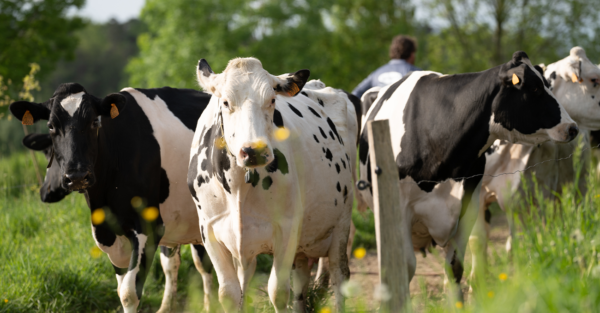Blog | Reading Time 2 minutes
Support transition cow digestion to improve performance
The transition period in dairy cows spans from dry-off through the postpartum and fresh phases. It represents a critical time for the cow with major dietary, metabolic, and physiological changes. Feed management is crucial as the transition from a high-fiber diet to a diet high in rapidly fermentable carbohydrates can be a challenge for rumen health.
How does calving influence the cow’s digestion?
Different studies analyzed rumen wall histology before and after calving. In some studies, a dietary change — increased levels of nonstructural carbohydrates (NFCs) — occurred from 3 weeks before to 6 weeks after calving.
Observations show typical desquamation of the rumen wall, sloughing, and decreased delamination between epithelial strata.
In addition, genetic analysis shows the rumen wall responded to inflammation through changes in gene expression levels. For example, the level of the anti-inflammatory cytokine IL-10 in the rumen epithelium doubles after calving. The tight junctions that hold epithelial cells together are weakened after calving. This could increase the translocation of pathogens and endotoxins (like lipopolysaccharides, or LPS) from the rumen leading to inflammation, metabolic unbalanced, and other challenges.
How can the diet be adapted?
Adapt close-up and fresh cow diets:
- Energy: close-up diet: 1.62Mcal/kg DM; fresh cow diet: 2.06Mcal/kg DM
- Crude protein: close-up diet: 12-14%; fresh cow diet: 17-18%
- Provide effective fiber with an adequate particle size (at least 30% NDF in the close-up diet; > 27% in the fresh cow diet)
Support the rumen microbiota during this specific period by favoring fibrolytic bacteria, which improves nutrient extraction and helps to increase rumen pH.
Numerous trials have measured the benefits of feeding live yeast S. cerevisiae CNCM I-1077 (LEVUCELL SC) during the transition.
When fed 30 days before calving as part of a daily ration, the live yeast supports high energy levels in early lactation. The average performance effects right after calving are:
- +2.3 kg/day of milk,
- +0.7 kg/d for body weight,
- +1.5 kg for dry matter intake (DMI), which limits energy deficiencies during this critical period.
In addition to animal performance, these trials provide evidence of positive outcomes on various reproduction and welfare indicators (feeding behavior, rumen pH, etc.).
Is there a specific approach recommended for primiparous cows?
Before their first calving, heifers have greater nutrient needs because of extensive mammogenesis. Thus, supporting heifer nutrition is even more important. The negative energy balance will be even greater in primiparous cows.
Transition period in Ruminants
Discover our dedicated programPublished Jan 8, 2024
Related articles
Need specific information?
Talk to an expert


